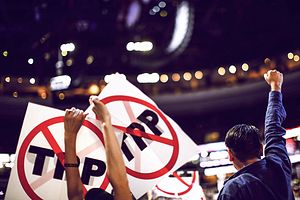Sweeping change is afoot in Asia. China has clearly become the single biggest power within Asia, and Beijing has outlined clear visions for its diplomatic and economic aspirations across the region and beyond. Washington, on the other hand, is seemingly going the other direction and less willing to be as formidable a Pacific presence as it has been. Having spent over seven decades defining and protecting regional security, there are growing doubts about U.S. commitment to the Asia-Pacific region, and how Washington views its future as a Pacific power. One issue, however, is clear. Asia remains not only the world’s most populous region, but also the most dynamic economically. As a slew of multilateral frameworks for cooperation emerge, the question remains whether any of them will be successful in ensuring continued growth across Asia and the world.
Of course, there is broad consensus among Asian nations that political and economic stability go hand in hand. There is also a shared belief that increased exports can lead to growth, and that the region could benefit from greater investment in infrastructure development. Yet there is concern that some of the proposals currently under consideration could actually increase tensions, rather than encourage greater cooperation, given the competing visions for leadership in Asia.

































